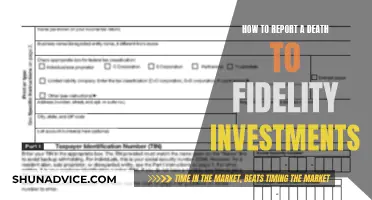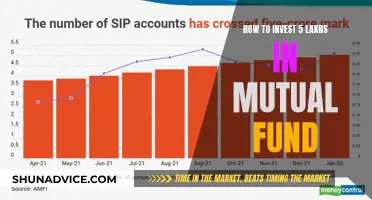
A provident fund is a government-backed retirement savings scheme used primarily in Asia and Africa. Both the employee and the employer contribute to a fund that aims to provide financial support to the employee when they retire. The fund is managed by the government, which sets minimum and maximum contribution levels. The money in the fund is held and managed by the government and eventually withdrawn by retirees or, in certain cases, their surviving family members.
| Characteristics | Values |
|---|---|
| Definition | A provident fund is an investment fund that is voluntarily established by an employer and employees to serve as long-term savings to support an employee's retirement. |
| Employee's contribution | 2% - 15% of the employee's salary |
| Employer's contribution | 2% - 15% of the employee's salary |
| Fund management | Managed by an investment management company in accordance with a specified investment policy to maximise financial returns, given an acceptable risk level. |
| Fund registration | Registered with the Securities and Exchange Commission (SEC) as a unique legal entity, fully separated from the employer and the investment management company. |
| Fund benefits | Financial security, return on investment, investment management, and tax saving. |
| Types of funds | Single fund (established by only one employer) and pooled fund (jointly established by two or more employers). |
| Withdrawal | Withdrawals are allowed after reaching the retirement age of 58 years, or in cases of unemployment, medical emergencies, marriage, etc. |
What You'll Learn

Provident funds are government-backed retirement plans
A provident fund is a government-backed retirement savings scheme used primarily in Asia and Africa. Both the employee and employer contribute to a fund that aims to provide financial support to the employee when they reach retirement. The fund is managed by the government, which sets minimum and maximum contribution levels.
Each national provident fund sets its own minimum and maximum contribution levels for workers and employers. Minimum contributions can vary depending on a worker's age. Some funds allow individuals to contribute extra to their benefit accounts, and for employers to do the same. Governments set the age limit at which penalty-free withdrawals are allowed to begin.
In some cases, the fund also pays out to people who cannot work due to disability. If a worker dies before receiving benefits, their surviving spouse and children may be able to receive survivors' benefits.
Provident funds are similar to pension funds, but there are some key differences. Provident funds are generally compulsory, often through taxes, and are funded by both the employer and employee. Pension funds are offered by employers and governments, and usually provide a retirement benefit to participants equal to a portion of their working income.
Provident funds are also similar to 401(k) plans in some ways. For example, in both cases, workers pay into their own retirement account, rather than a group account. However, with a 401(k) account, the account holder makes the investment decisions, while in a provident fund, the government makes the investment decisions.
Real Estate Funds: Invest Now or Miss Out?
You may want to see also

They are used in Asia and Africa
A provident fund is a government-managed retirement savings scheme used primarily in Asia and Africa. It is similar to a hybrid of 401(k) plans and Social Security in the U.S. and also shares traits with pension funds. Provident funds are used in Singapore, India, and South Africa.
Both the employee and employer contribute to a provident fund, which provides financial support to the employee when they retire. The employee's contribution is typically deducted from their salary at a rate of 2% to 15%. The employer contributes an additional 2% to 15% of the employee's salary, which is considered part of employment welfare. The fund is managed by an investment management company to maximise financial returns while adhering to an acceptable risk level.
The provident fund is a unique legal entity, separate from the employer and the investment management company. This ensures that the fund's assets remain unaffected by any financial liabilities of the employer or investment management company. The fund is managed by the government, which sets minimum and maximum contribution levels. Each national provident fund sets its own contribution levels, which may vary depending on a worker's age. Some funds allow for additional contributions from individuals and employers.
Governments set the age limit for penalty-free withdrawals. In some cases, pre-retirement withdrawals are permitted under special circumstances, such as medical emergencies. In South Africa, for example, provident fund payouts can be claimed at any age if the individual has been a non-resident for three uninterrupted years. If a worker dies before receiving benefits, their surviving spouse and children may be eligible for survivors' benefits.
Hedge Funds: Where Are They Investing Their Money?
You may want to see also

Both employers and employees contribute to provident funds
A provident fund is a government-backed retirement fund, often compulsory, where both employers and employees contribute to ensure long-term savings for employees' retirement. The fund is managed by an investment management company to maximise financial returns, given an acceptable risk level.
Contributions
The amount deducted from an employee's salary typically ranges from 2% to 15%. Employers are also required to contribute the same percentage, which is considered part of employment welfare. The minimum and maximum contribution levels are set by the government and may vary depending on the worker's age.
Withdrawals
Withdrawals from provident funds are typically allowed after reaching the retirement age, which is usually set at 58 years. In some cases, early withdrawals may be permitted due to special circumstances, such as medical emergencies, unemployment, or other financial needs. However, there may be restrictions on the amount that can be withdrawn before retirement.
Benefits
Provident funds offer several advantages, including:
- Financial security for retirement, providing a lump sum payment and/or monthly payouts.
- Encouraging long-term savings and financial planning.
- Potential for higher returns compared to placing the sum in a bank deposit.
- Tax benefits for both employers and employees on contributions.
- Building a strong relationship between employers and employees, minimising labour disputes and increasing staff loyalty.
Invest in Your Future: IRA Funds and You
You may want to see also

Provident funds are similar to 401(k) accounts
One key difference between the two is that provident funds are typically government-managed, while 401(k) accounts are offered by private-sector employers in the United States. Provident funds are commonly used in Asia and Africa, whereas 401(k) plans are specific to the United States.
Another difference lies in the tax treatment of the contributions. In a 401(k) plan, employees can choose between traditional 401(k) contributions, which are tax-deferred, and Roth 401(k) contributions, which are made with after-tax dollars but allow for tax-free withdrawals. In contrast, provident funds may or may not offer tax advantages, depending on the specific country and plan. For example, in India, contributions to provident funds are tax-exempt.
Both types of plans usually have restrictions on withdrawals, with penalties for early withdrawals before a certain age, typically 59 1/2 years in the case of 401(k) plans. These restrictions help ensure that the funds are used for their intended purpose of providing retirement income.
In summary, while there are some similarities between provident funds and 401(k) accounts, there are also important differences in terms of geographic applicability, management, tax treatment, and specific rules governing contributions and withdrawals.
Global Funds: Where Are They Invested?
You may want to see also

Provident funds can be withdrawn as a lump sum or monthly payments
A provident fund is a government-managed retirement savings scheme used primarily in Asia and Africa. Both the employee and the employer contribute to the fund, which is designed to provide financial support to the employee upon their retirement. The money in the fund is held and managed by the government and eventually withdrawn by retirees, or in certain cases, their surviving family members.
Provident funds can be withdrawn as a lump sum or in monthly payments, depending on the type of withdrawal. There are three types of provident fund withdrawals: PF final settlement, PF partial withdrawal, and pension withdrawal benefit.
PF final settlement refers to the withdrawal of the entire provident fund balance, usually after the employee has reached the retirement age of 58 years. However, in certain circumstances, such as unemployment or medical emergencies, individuals may be able to withdraw their entire provident fund balance before reaching the retirement age.
PF partial withdrawal allows account holders to withdraw a portion of their provident fund balance before its maturity, under specific conditions. For example, individuals can withdraw up to 75% of their provident fund if they have been unemployed for at least one month, and the remaining 25% if they are unemployed for two months or more. Other situations that permit partial withdrawal include higher education expenses, marriage expenses, medical emergencies, and home loan repayments.
Pension withdrawal benefit allows individuals who have contributed to the pension fund for at least 10 years to receive a monthly pension once they attain the age of 58 years. If the contribution to the pension fund is less than 10 years, the pension balance can be withdrawn as a lump sum.
Understanding AIFs: Alternative Investment Funds Explained
You may want to see also
Frequently asked questions
A provident fund is a government-backed retirement fund. It is a long-term savings scheme, where both the employee and the employer contribute a portion of the employee's salary. The fund is managed by the government and eventually withdrawn by retirees or, in certain cases, their surviving family members.
A provident fund is a compulsory retirement savings scheme, where a portion of an employee's salary is contributed by both the employee and the employer. The funds are pooled and invested by a trust, generating interest. The fund remains active until the employee decides to withdraw it after retirement. The withdrawal can be done in two ways: after attaining the age of 58 years, or if the employee has been unemployed for one whole month, in which case they can withdraw 75% of their provident fund.
A provident fund offers financial security and peace of mind for retirement. It encourages long-term savings and provides financial stability for the member and their family upon retirement, resignation, or death. It also offers a return on investment, with the potential for higher returns than a regular bank deposit. Additionally, the fund is managed by a qualified and experienced investment management company, ensuring the fund's assets are protected even if the employer or investment management company becomes financially insolvent.







